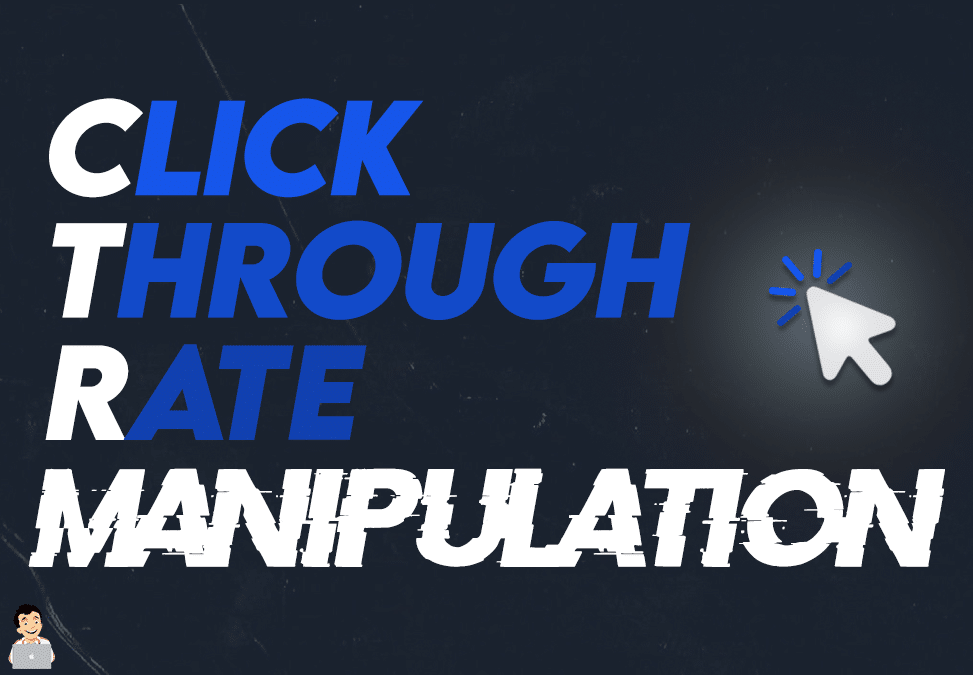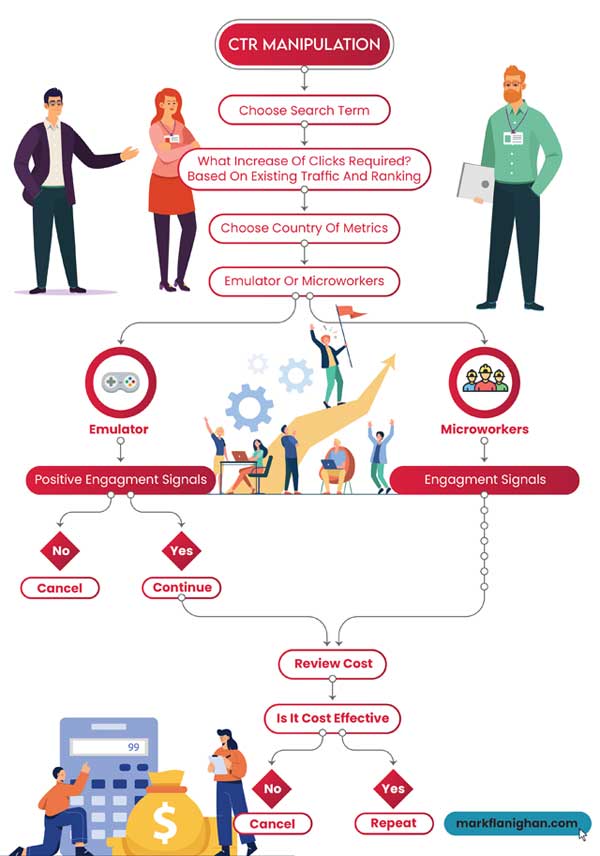How to Measure the Impact of CTR Manipulation on Your Marketing
Comprehending the subtleties of click-through rate (CTR) adjustment in advertising is crucial for services striving for real user engagement. By examining essential metrics such as conversion prices and bounce prices, online marketers can discover prospective disparities that may emerge from fabricated enhancements. Making use of devices like Google Analytics and carrying out A/B testing can supply insights into the effectiveness of numerous techniques. Nonetheless, the ramifications prolong past prompt data; the lasting results on brand name stability and customer trust fund warrant mindful factor to consider. What continues to be to be explored is just how these elements interconnect and affect general advertising success.
Comprehending CTR Manipulation
Recognizing CTR manipulation is necessary for marketing experts looking for to maximize their projects and make certain data integrity. Click-through price (CTR) refers to the proportion of customers who click on a certain link to the total number of customers that see the advertisement or web content.
The effects of CTR control expand past mere data distortion; they can threaten count on digital advertising and marketing. When services depend on inflated metrics, they might buy inefficient campaigns, eventually hurting their return on financial investment. In addition, platforms may punish marketers participating in such methods, causing additional implications for their advertising efforts.
To properly battle CTR control, online marketers have to create a thorough understanding of their data sources and analytics tools. By employing advanced monitoring approaches and inspecting website traffic sources, they can determine irregular patterns and ensure that their efficiency metrics show real user engagement - CTR Manipulation. This watchfulness is vital for promoting lasting success in a progressively affordable electronic landscape
Key Metrics to Assess
Efficient analysis of vital metrics is important for examining real efficiency of marketing projects and finding prospective CTR adjustment. One main statistics to take into consideration is the Click-Through Price (CTR) itself, which stands for the ratio of users that click on an ad to the complete number of individuals that watch it. An unexpected spike in CTR may indicate manipulation, necessitating more investigation.
Additionally, keeping an eye on conversion rates is important. A high CTR with a low conversion rate could indicate that the clicks are not genuine or that the targeting is misaligned (CTR Manipulation Press Release). In a similar way, analyzing bounce rates can offer insight right into customer interaction; a high bounce price after a click may recommend that the website traffic is not quality-driven.

Devices for Dimension

Additionally, A/B screening devices such as Optimizely or VWO can facilitate experimentation with different ad variations to establish which aspects drive greater CTR. These tools enable marketing professionals to evaluate real-time performance and make data-driven adjustments. Social network analytics devices, like Hootsuite or Sprout Social, can additionally contribute in understanding CTR within social systems, supplying insights right into target market behavior and interaction trends.
In addition, warm mapping devices, such as Hotjar, can expose exactly how individuals interact with ads, aiding to determine where renovations can be made. Combining these devices creates a durable measurement framework, enabling marketing experts to discern the results of CTR manipulation effectively. Ultimately, the right selection of measurement tools is critical for making informed marketing decisions and optimizing campaign performance.

Reviewing Lasting Effects
One need to take into consideration the lasting results of CTR manipulation on total advertising and marketing efficiency, as temporary gains can commonly mask deeper effects. Over time, unnaturally pumped up click-through rates may bring about reduced trust fund from consumers and search engines alike. When customers consistently experience deceptive techniques, they may end up being hesitant to engage with the brand, resulting in lower conversion prices in the future.
In addition, formula updates from systems such as Google are designed to focus on real involvement over inflated metrics. Companies that count on CTR control may find themselves punished, leading to a decrease in organic reach and visibility. This can have a plunging result on brand name trustworthiness and customer commitment, eventually weakening the really objectives that the preliminary control looked for to accomplish.
Moreover, the data gathered from adjusted CTR may deceive marketers in their strategy growth. Depending on skewed information can lead to misguided campaigns that fail to resonate with the target market, bring about lost sources and missed opportunities. It is important for marketing experts to assess the lasting implications of CTR manipulation and prioritize sustainable, ethical engagement methods for lasting success.
Honest Factors To Consider in CTR Manipulation
In the realm of digital advertising, ethical factors to consider bordering CTR adjustment are vital. While the wish to improve click-through prices (CTR) can lead to temporary gains, the prospective long-term repercussions on brand name integrity and customer trust fund can not be neglected.
In addition, ethical concerns reach conformity with regulations such as the Federal Profession Payment (FTC) guidelines, which mandate openness in marketing. Falling short to follow these standards can reveal services to legal ramifications and harm their reputation. Marketing experts need to consider the ramifications of their approaches on user experience and the broader market landscape.
Furthermore, the rise of fabricated intelligence and automation in marketing offers further ethical dilemmas. Inevitably, see this page honest marketing practices should prioritize transparency, honesty, and respect for the customer, fostering lasting relationships that transcend mere metrics like CTR.
Conclusion
To conclude, gauging the company website effect of CTR control on marketing requires a detailed analysis of key metrics, including click-through rates, conversion rates, and bounce rates. Using analytics tools and conducting A/B testing can provide valuable insights into customer interaction and web traffic top quality. Analyzing long-term effects and sticking to ethical considerations is crucial for informed decision-making. Eventually, a data-driven approach makes sure that advertising and marketing techniques are reliable and aligned with genuine user communications.
Understanding the subtleties of click-through rate (CTR) manipulation in advertising is crucial for businesses striving for real individual involvement.Effective analysis of crucial metrics is important for examining the true efficiency of advertising and marketing campaigns and discovering possible CTR control.One must consider the lasting results of CTR adjustment on total advertising and marketing performance, as go to this site temporary gains can typically mask much deeper implications.In the world of digital marketing, ethical considerations surrounding CTR adjustment are critical.In verdict, gauging the effect of CTR manipulation on marketing needs an extensive evaluation of vital metrics, including click-through prices, conversion rates, and bounce prices.